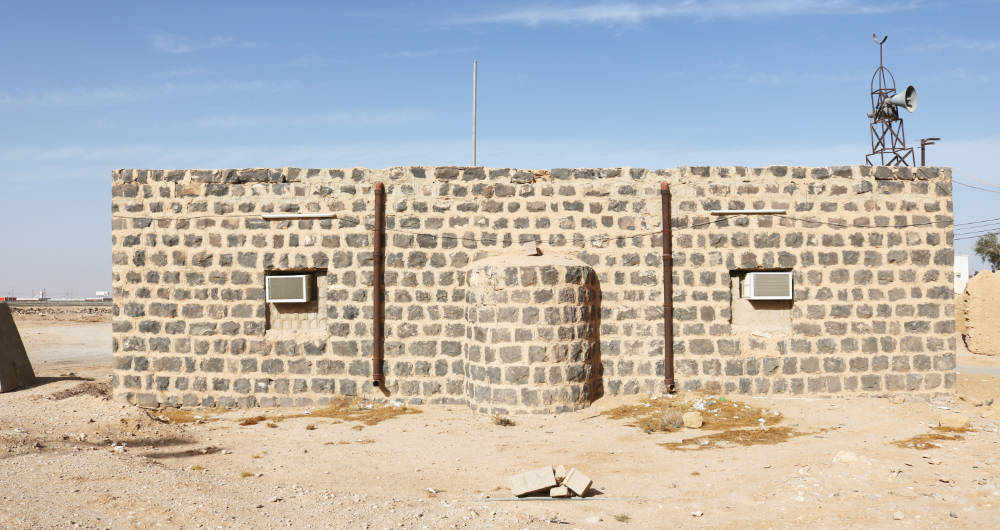JEDDAH: Long-forgotten mosques across the vast lands of Saudi Arabia are being rediscovered in an exciting initiative.
With a budget of SR57 million ($15 million), the Prince Mohammed bin Salman Project for the Renovation of Historical Mosques has directed the renovation of 30 mosques in 10 regions across the Kingdom over a period of 423 days. The next phase plans to bring back to life a hundred more mosques of historical and geographical importance.
In restoration projects, there is often a delicate balance between preserving the property’s past while providing the necessary modernization and maintenance to ensure the property’s future.
For years, the restoration of old mosques depended on the generosity of charities and private donations.
Crown Prince Mohammed bin Salman made the restoration and renovation of historical mosques a focus of the leadership.
JARIR AL-BAJALI MOSQUE Built: 631 /Pre-renovation/ Capacity: Unoccupied Total area: 350 sq. meters /Post-renovation/ Capacity: 135 Total area: 350 sq. meters
A mosque is not just bricks and mortar; its setting is also intrinsic to its religious value. Even when standing alone, it forms part of a larger composition and serves a grander purpose.
“Mosque design in the Kingdom show a significant difference from one region to the next,” said Dr. Mihsin Al-Qarni, executive director of the project. Under the crown prince’s directive, the restoration of historic buildings requires a collaborative effort.
“The renovation of historical mosques by professionals in the field — engineers, designers, urban planners, civil engineers, interior designers, environmental designers, artists and more — is important to ensure the preservation of the original urban identity of each mosque,” said Dr. Fatma Jobran, an interior environmental design professional.
With mosques that range in age from 60 to more than 1400 years old, the main purpose of these restoration projects is to carry cultural heritage monuments into the future with the minimum change to their structure and characteristics, said Dr. Jobran.
“The cultural element of the renovation reflects the trend towards sustainability and green architecture, as the preservation and development of historical mosques contribute to highlighting the cultural dimension of the Kingdom,” she said. One interesting aspect of the project was to shed light on mosques with intriguing designs that provide valued insight into the architectural style of their period.

QAFAR MOSQUE Built: 1916 /Pre-renovation/ Capacity: 170 Total area: 687 sq. meters /Post-renovation/ Capacity: 400 Total area: 600 sq. meters
The materials used in the construction of a mosque vary according to its date and location.
“The weather is an important element when designing and building mosques, and builders used materials familiar to their regions to accommodate the weather conditions, as well to ensure that the mosque was open throughout the year,” said Dr. Al-Qarni.
In mountain villages of the western region, mosques are characterized by the use of flat-shaped stones, a style known as Tuhami style. These mosques, located between the cities of Taif and Jazan, are characterized by stone constructions with roofs made of straw and branches.
In the southern region of Asir, building used “rain diverters,” rows of angled tiles that protect the walls from the torrential downpours that are common here.

AL-HADITHA MOSQUE Built: 1956 /Pre-renovation/ Capacity: 65 Total area: 229 sq. meters /Post-renovation/ Capacity: 86 Total area: 280 sq. meters
One of the oldest mosques in the Makkah region, the Jarir Al-Bajali Mosque, is believed to date back to the 10 Hijri year, or 631. There are differing accounts of the origins of the structure, which is located about 100 km outside of Taif and has gone through several renovations. Many believe it was built by the prophet’s companion Al-Bajali himself, while others say it was merely named after him. One of its most significant features is the use of thick logs for the ceiling and support beams.
In the southern islands of Farasan in the Red Sea, part of Jazan region, the traditional local style is a mix of rough stones, wooden beams, palm tree leaves and even coral and mud that has hardened over the years. Al-Taboot Mosque, with its three green domes, was believed to have been built approximately 300 years ago during Ottoman times, and went through a number of restorations by the local community before its significance was recognized by the project managers.
These mosques, with their diverse historical narratives and architectural styles, will soon be opened to worshippers once again.

AL-JALOUD MOSQUE Built: 1762 /Pre-renovation/ Capacity: 80 Total area: 227 sq. meters /Post-renovation/ Capacity: 129 Total area: 250 sq. meters




























